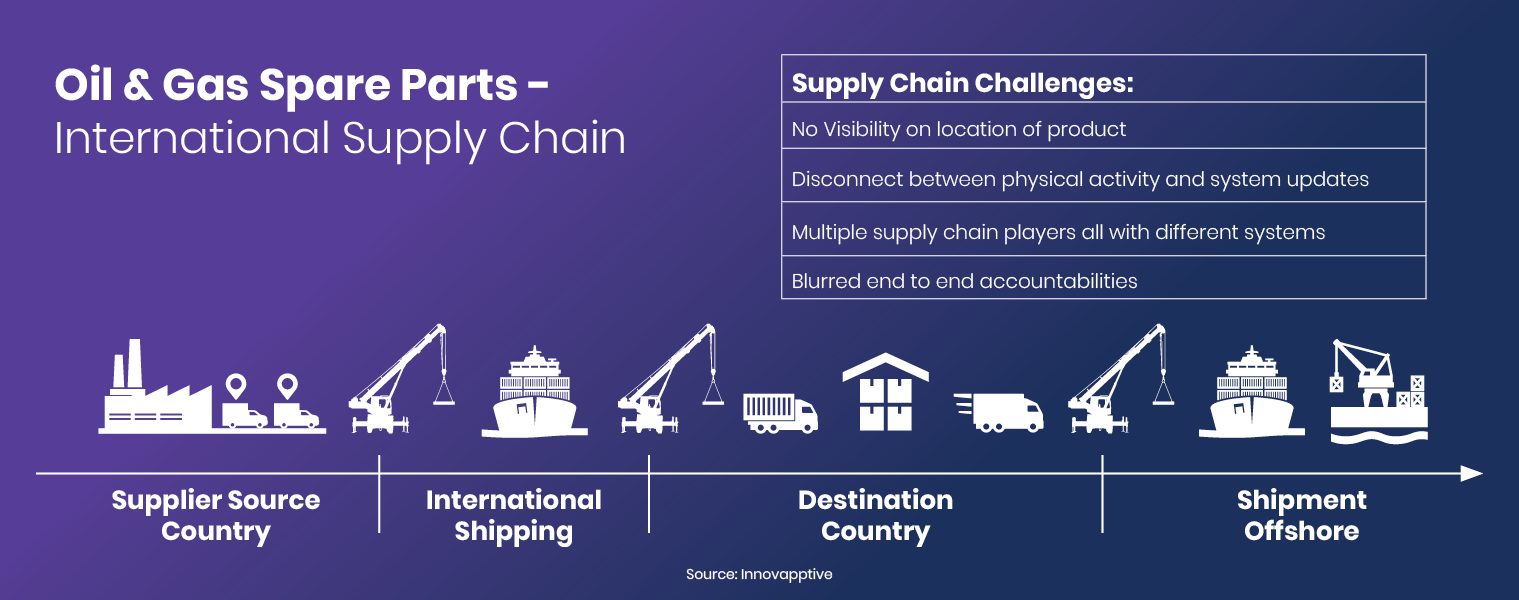The oil and mining industries share a vociferous appetite for the capital where it can cost billions of dollars to develop a new oil field or mine. Once the asset is up and running, maximizing production and minimizing unplanned downtime is critical to driving a solid return on capital employed. Companies have used several levers to reduce unplanned downtime including better maintenance planning, honing business processes, improving data accuracy, deploying new technology, and not in the least the skill of people. However, one untapped area that has not received enough attention until recently is
Supply Chain Management for
Maintenance Repairs and Operations (MRO)
Supply chains in the oil and mining industries tend to be long and complex. Nature has provided us with abundant natural resources but often in the more remote parts of the world, and often a long way from the warehouses where plant equipment is sourced. If you're drilling for oil in Mozambique or mining for copper in Indonesia then chances are that the much of the equipment and spare parts required will have started their journey in North America, Europe or China. Most industry players have found it challenging to manage these complex supply chains. If you don’t have the right part, in the right place, at the right time, then plant downtime increases with a potential multi-million dollar hit in lost production.
The diagram below shows a typical international supply chain for equipment and parts. It starts in the suppliers manufacturing facility many thousands of miles away and ends with a customer (in this case a welder) on an offshore production platform. The physical material flow is complex involving numerous different players, starting with the material supplier through transport companies, freight forwarders, shipping companies, customs brokers and warehouse operators. The associated information flow is equally complex with systems that don’t talk to each other, manual processes and disconnects. The question for the customer is simple “where are my pants?” but often the answer is “we don’t know”.

Oil and mining companies have some existing tracking capabilities but very few have complete end-to-end supply chain visibility. For example, the major international freight forwarders have had track and trace solutions for many years that provide partial visibility. These solutions capture the date when the material was picked up from the supplier and track the international shipping leg. Freight forwarders will provide access to their customers into their track and trace systems but if the customer is using several different freight forwarders it can be difficult to get consolidated visibility on all inbound shipments, at any point in time.
Supply chain visibility is often lost when the material arrives in the destination country and responsibility for the shipment changes, based on the agreed terms. Many developing countries suffer from under capacity in port infrastructure and it may take longer for shipments to move through the port than on the international shipping leg! When the shipment finally clears customs, they often arrive at the receiving warehouse unannounced. This makes it difficult to plan warehouse operations and most importantly meet the Required Onsite Dates critical to the engineers working on maintenance activities. These gaps in supply chain visibility lead to an increase in equipment and asset downtime, by not having the right part in the right place at the right time.
At Innovapptive we are starting to see oil and mining companies tackle the issue of opaque end-to-end supply chains. Companies are embracing different initiatives to close the supply chain visibility gaps:
International Track and Trace Solutions - There are several companies including the large ERP vendors who can now provide more holistic international tracking solutions across all suppliers and they can even track equipment and materials through the supplier’s internal production process. These initiatives require big supplier enablement programs and can be time-consuming and expensive to implement.
Mobile access to Freight Forwarder Track and Trace Solutions - An alternative and simpler option is to link into the existing tracking tools provided by the global freight forwarders. This can be done through a mobile device by entering the purchase order number or a tracking number and the user is immediately provided with the current location of the shipment.
Advanced Ship Notice (ASN) – Widely used in the retail sector, the ASN is a very useful document for a warehouse confirming the arrival date of materials. It allows the warehouse to better plan workload and provides firmer Required Onsite Dates to the end-user. The ASN can be automated using Electronic Data Interchange (EDI) or at its most basic via an email confirmation.
Warehouse Visibility - In paper-based warehouse operations, physical activities and updates to the ERP system do not happen at the same time. For example, warehouse staff may have completed loading a container for the offshore shipment but the update in the ERP is done in the office a few hours later, by which time the material is already on its way. Mobile technology can be used to address this problem with warehouse staff transacting in the ERP system as soon as the physical activity is completed. This benefits warehouse managers and supervisors who now know exactly the status of all activities at any point in time. Additionally, engineers using mobile devices linked into the ERP system can track their order through the warehouse process and most importantly see when it’s going to arrive.
Outbound Track and Trace - From warehouse to the customer is the important “last mile” of a Supply Chain that could have started thousands of miles away. The “last mile” can be another black hole where company’s lose visibility of materials. This is also an area where using mobile devices can help. Driver and vehicle details can be captured including the loading completion date/time and departure date/time. Electronic Proof of Delivery (ePOD) can be used to track arrival at interim destinations and confirm receipt of the delivery. SAP’s Remote Logistics Management (available on mobile from Innovapptive) improves visibility of the outbound process all the way through to the offshore platform. Companies are also looking to get better inventory visibility in their offshore warehouses by using the same mobile technology that they use in their onshore warehouses.
Oil and mining companies are now showing a renewed focus on their MRO Supply Chains to get true end-to-end visibility. The prize is substantial through reduced plant downtime and increased production. Importantly, all the improvement opportunities described here are already available and based on existing technology.


 Previous Article
Previous Article
